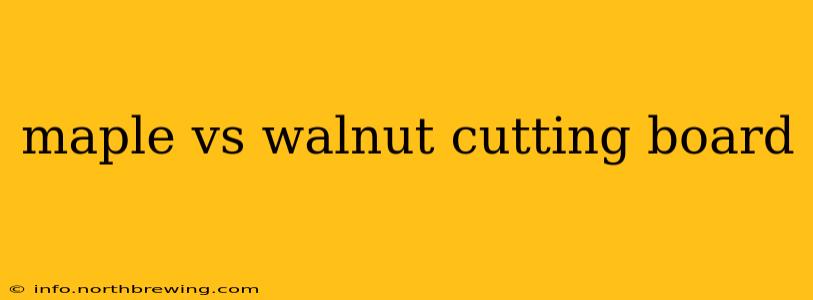Choosing a cutting board can feel overwhelming. With so many materials and styles available, the decision often comes down to personal preference and intended use. But when comparing two popular hardwood choices like maple and walnut, understanding their unique properties becomes crucial. This comprehensive guide dives into the pros and cons of maple and walnut cutting boards, helping you make an informed decision.
What are the Differences Between Maple and Walnut Cutting Boards?
The key differences between maple and walnut cutting boards lie in their hardness, grain patterns, and overall aesthetic appeal. Maple is generally harder than walnut, resulting in greater durability and resistance to knife marks. Walnut, on the other hand, boasts a richer, darker color and a more pronounced grain pattern, adding a touch of elegance to any kitchen.
Is Maple or Walnut Harder?
Maple wins this round. Hard maple boasts a Janka hardness rating significantly higher than walnut. This means maple is more resistant to dents and scratches from knives, making it a more durable long-term choice for heavy-duty cutting. Walnut, while still a hard wood, is more susceptible to wear and tear over time.
Which Wood is Better for Cutting?
While both are suitable for cutting, maple's superior hardness makes it slightly better for regular cutting tasks. The denser wood minimizes the risk of dulling your knives and reduces the likelihood of scoring the surface. However, both woods require proper care and oiling to maintain their integrity and prevent damage.
Which is More Beautiful?
This is entirely a matter of personal preference. Maple offers a clean, bright aesthetic with subtle grain variations. Its lighter color complements many kitchen styles. Walnut, with its deep brown hues and prominent grain, presents a more dramatic and sophisticated look. The choice depends on your kitchen's design and your personal taste.
Are Walnut Cutting Boards More Expensive?
Generally, walnut cutting boards tend to be more expensive than maple cutting boards. This is due to several factors, including the higher cost of walnut lumber and the greater time and skill often involved in crafting attractive pieces with its distinctive grain.
How Do I Maintain a Maple or Walnut Cutting Board?
Proper maintenance is vital to extend the lifespan of any cutting board, regardless of the wood. Regular oiling with mineral oil is crucial for both maple and walnut. This helps to prevent dryness, cracking, and bacterial growth. Always hand wash and thoroughly dry your cutting board after each use. Avoid soaking it in water, as this can damage the wood.
How often should I oil my cutting board?
The frequency of oiling depends on how often you use your cutting board and the dryness of your environment. As a general guideline, oiling every few months is usually sufficient. You'll notice the wood becoming duller; this indicates it's time for another coat.
Can I put my maple or walnut cutting board in the dishwasher?
No. Never put your wooden cutting board in the dishwasher. The high heat and harsh detergents will damage the wood, leading to cracking and warping.
Which Cutting Board is Right for Me?
The best cutting board for you depends on your priorities. If durability and resistance to knife marks are paramount, hard maple is the superior choice. If you prioritize aesthetics and a luxurious look, walnut is a stunning option. Consider your budget and how frequently you plan to use the board when making your final decision. Both maple and walnut offer exceptional quality and will serve you well with proper care.
